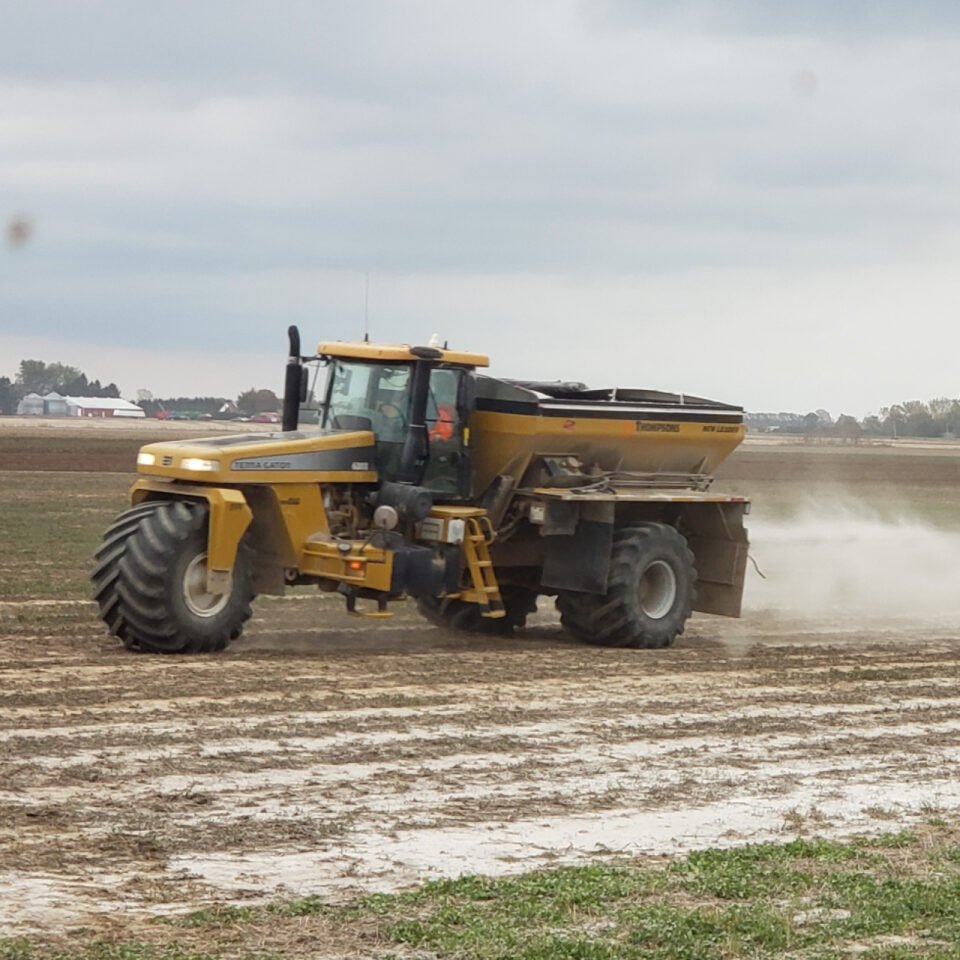
Why is it important to know Crop Removal Rates?
It is very important to factor in the nutrients that are removed from your soil when making fertilizer recommendations. This is highly dependent on crop rotation, soil fertility, yield and crop residue management in a given year.
- Generally with a 200 bu/ac crop of corn there is a removal of approximately 240 lbs/ac of nitrogen (N), 82 lbs/ac of phosphorus (P2O5) and 56 lbs/ac of potassium (K2O).
- Soil sampling is an extremely important tool to be able to be confident in your nutrient management plan accuracy.
- All nutrients react differently in the soil and are utilized differently in the plant and therefore it is important to make recommendations that factor in these differences.
- Management of the crop residue needs to be taken into account. If the residue is removed from the field, more nutrients will be removed in addition to the amount removed from the grain alone.
Nitrogen
- Nitrogen is highly mobile in the soil and levels can be extremely variable based on weather related factors. Proper management is crucial to prevent economic and environmental deficits.
- Recommendations on nitrogen are highly dependent on the projected yield of the crop as well. This estimation is incredibly important and needs to be based on previous season’s yields under favourable growing conditions. Projecting for an unattainable yield goal can lead to excess nitrogen application.
- Legume crops require little to no nitrogen because of their ability to fixate their own through symbiotic bacteria.
- Consider credits from cover crops, manures, etc. when making recommendations.
Phosphorus
- Phosphorus is much less mobile in the soil and therefore has much different management practises. Proper placement is essential in order for the crop to be able to reach it.
- Many crops benefit from having P fertilizer included in a starter, either in-furrow with the seed or in a band close to the seed. This is important in many fields with low or medium testing P levels for the seedling crop to have access to P early in season.
- Losses mainly occur as erosion and surface run-off, as well as P dissolved in soil solution before it has a chance to bind to soil particles. Incorporating or banding phosphorus beneath the soil surface is important to prevent these losses.
Potassium
- If soil test levels are low, applying more than double the rate of crop removal of K can be recommended.
- Generally applying 220 lbs/ac K20 is the maximum application rate for field crops.
- Crops such as tobacco, tomatoes, forages and silage are high users of K, and may require split application for crop safety.
Calcium
- Calcium rarely applied in field crops but may be in higher users such as vegetable crops, tobacco, onions, potatoes or tomatoes.
- Affected by soil pH- low pH more likely to be low in Ca.
- A soil test within the range of 1000 to 4000ppm is considered typical.
- Ontario soils tend to have higher Ca levels and often in excess – this will not be detrimental to crop growth but will increase the difficulty of lowering pH.
Magnesium
- High Mg soils are common but not detrimental.
- When under 100ppm additional application is recommended.
- When potassium is equal or higher than magnesium additional Mg is recommended because K inhibits the availability of magnesium. It is more important to keep K and Mg balanced than to necessarily replace Mg based on crop removal alone.
Sulphur
- Historically Southwest Ontario farms have received sufficient amounts of sulphur in the form of acid rain and dry deposition but trends are decreasing with cleaner industrial activity and better air quality. Therefore the need for fertilizer is increasing from past years.
- Sulfur is a mobile nutrient similar to Nitrogen, and therefore will require timely applications to ensure that it is available to the crop at the right time.
- Research shows 10-15 lbs/ac of S is optimal for winter wheat. Corn seems to be showing more of a response, especially on light-textured soils, as less is deposited from the atmosphere each year. Soybeans have shown response, but not as consistently.
Replacing Crop Nutrients
Knowing what nutrients your crop has removed from the soil is a very important part to calculating a fertilizer plan for your crops in the following years. It is important to remember that as yields increase, the amount of nutrients being removed from the field will increase as well, and so fertilizer rates must rise as well to prevent depletion of nutrients in the soil and degradation.
Crops generally uptake much more nutrients in order to grow roots, stalks, etc. that stays in the soil and is recycled. But those nutrients must be available to be taken up by the crop for growth initially. Good soil testing can show whether a crop may need to be fertilized above and beyond what it will remove; this is called building the soil.
Finally, as at any time when applying a crop nutrient source to your fields, use BMPs like the 4Rs to ensure that your crop nutrients aren’t lost and are available to the crop when and where it needs it. Use the Right Source, at the Right Rate, Right Time, and Right Place.
Sources:
http://msue.anr.msu.edu/news/nutrient_removal_rates_in_grain_crops http://fieldcrop.msu.edu/uploads/documents/E2904.pdf http://www.agtest.com/articles/TopsoilReportRange.pdf http://fieldcropnews.com/2018/06/ontario-field-crop-report-june-21-2018-sulphur-response-in-ontarios-field-crops/ http://www.omafra.gov.on.ca/english/crops/pub611/pub611.pdf